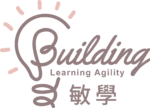I came across PEERS Goal Framework developed by Jim Knight in the book, The Impact Cycle, and found this framework easy to use. When setting goals, we naturally think of SMART goals which are understood as Specific, Measurable, Actionable (or Achievable, Attainable), Realistic (or Relevant), and Timely (or Time Bound).
Based on my observation and experience, SMART goals are complex to use with middle school students. Students might not know how to distinguish short-, medium-, and long-term goals, making it challenging for them to outline actionable steps. Young students also have trouble estimating how long it might take to achieve their goals. Teachers need to provide explicit guidance in helping students craft SMART goals. This can be very time-consuming. The SMART goals tend to be an ‘activity’ that students do at the start of the school academic year or the new calendar year. Students don’t continuously monitor their goals.
P
Powerful
E
Easy
E
Emotionally Compelling
R
Reachable
S
Student-Focused
I have adapted Jim Knight’s PEERS Goal Framework for students with permission. PEERS suggests that students can receive support from others, making it easier to achieve their goals. In the Reachable aspect, it is crucial to allocate time and help students to specify clear success criteria and support them in identifying specific strategies to achieve their goals. To help students develop self-regulation, we have to t explicitly talk about strategy with students. “Strategies are knowledge of procedures, knowledge about how to do something – how to decode a word, comprehend and a story better, compose more completely and coherently, play first base better, and so on.” (Pressley and Harris, 2008, as cited in Cleary, 2018).
A goal that fosters hope has a reasonable chance of being achieved because (a) teachers believe they can achieve it (agency) and (b) it includes a strategy or strategies that can help them achieve it (pathways).
Jim Knight Tweet

I will guide students in setting their PEERS Goals after the holidays. I want to encourage students to make their goals ‘visible’ to support each other and monitor their goals regularly. I have created a Jamboard to support the process and identify the areas students want to develop further and guide them to identify strategies to achieve their goals. I intend to use this to guide students to think about short-term goals and identify an appropriate timeframe to achieve their goals for the new year.
It may be helpful to know that Jamboard supports up to 16 simultaneous access points on a single device advised by Google for Education.

References
- Cleary, Timothy J. The Self-Regulated Learning Guide Teaching Students to Think in the Language of Strategies. New York: Routledge, . Routledge, 2018.
- Knight, Jim. The Impact Cycle : What Instructional Coaches Should Do to Foster Powerful Improvements in Teaching. Thousand Oaks, California, Corwin, A Sage Company, 2018.
Hi @jimknight99 Is it possible for me to adapt your PEERS goal framework for our students to use? I found it's easy and more effective than SMART goal setting. Thanks. pic.twitter.com/X20Z9iODSB
— αℓιѕση уαηg (@alisonyang_dc) January 24, 2019







